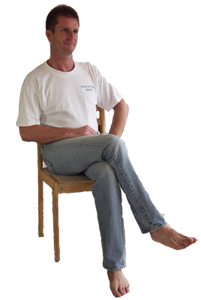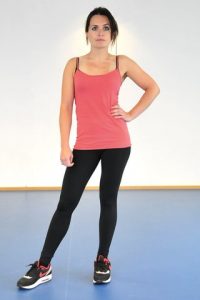April 24 2020
Lateral hip pain can be a real pain in the (side) of the butt!
It is a very common problem that can be very debilitating if left untreated. If you have had this condition then you will know that often you end up on a bit of a merry go round with scans, appointments with various health professionals and a number of different treatments.
Hopefully the following article can settle the noise around this condition and get you on the road to recovery.
TERMINOLOGY
Lateral hip pain goes by many names which can add to the confusion. You may have seen terms like lateral hip pain, greater trochanteric bursitis, gluteal tendinopathy, hip bursitis, greater trochanteric pain syndrome or, our favourite, my dodgy old hip!
Commonly the tendon and bursa are involved together, in varying degrees in this condition. Keep an eye out for these terms and just understand that they are mostly interchangeable terms for similar pathology.
Pain in your lateral hip will involve some underlying pathology to the tendons of the gluteus medius or gluteus minimus muscles. Commonly there will also be swelling and inflammation in the bursa around the hip as a secondary finding. As a result of this, lateral hip pain is most successfully treated like a tendon problem. If you want more background on treating tendon problems in general, we have written about this before and you can read up on it here.
CAUSES OF LATERAL HIP PAIN
Most often, pathology in the gluteal tendons that cause lateral hip pain is from a burst of unaccustomed activity. Triggers such as a rapid increase in walking, walking uphills or stairs, gardening, running or other lower limb exercises involving repetitive deep lunging and squatting can aggravate symptoms and overload the tendon.
WHO GETS IT
Commonly gluteal tendinopathy presents in women more than men by a ration of 4 to 1, sorry ladies! It is seen mostly in people over the age of 40 and is associated with people who lack strength and movement quality in and around their hips and pelvis. It is also common that people with this condition also present with some sort of lumbar spine pain in about 25% – 35% of cases.
INITIAL MANAGEMENT
Reducing aggravating activities
If the main problem is overloaded tendons, it makes sense to firstly find ways to unload them. Reducing the activities that aggravate the tendon for a short period of time to allow the initial and nasty symptoms to develop is the first part of treatment. This doesn’t necessarily mean stop all activity, but it can mean dialing back what you are doing.
Correcting poor postural habits
Tendons don’t like to be compressed against the bony structures that they attach to. This can drive the changes in tendon structure that lead to pain in this condition. In order to do this we ask all of the people suffering from this to avoid sitting cross legged, hanging all of their weight on one hip when standing and sitting in low chairs to stop the aggravating compressive postures. See below great illustrations of poor postures that can aggravate these tendons;


ISOMETRIC EXERCISES
Once the initial lay off of has settled your acute symptoms, isometric contractions (squeezing your muscles without moving them, think Arnold Schwarzenegger) to build some initial strength are the first port of call. Doing these consistently for the effected and painful muscles and tendons can help decrease pain and build an initial bit of strength.
STRENGTHENING EXERCISES
Once you have gained some strength from the isometric exercises the key is then to build on that strength and increase the capacity of the tendon and muscles to cope with the tension put on them for daily activities and exercise. These exercises will involve movement and will gradually build to incorporate strengthening the gluteal muscles as well as the muscles of the trunk and lower limbs. These are normally performed 3 – 4 times per week to really stimulate the tendon and improve strength.
MOVEMENT QUALITY EXERCISES
The best clinical research suggests that strength training alone does not resolve gluteal tendinopathy. Improving movement quality during activities such as walking, standing up from sitting and negotiating stairs and hills can break the cycle of tendon overuse. This essential part of the tendon rehab process cannot be missed to get 100% on top of your condition.
TIME FRAMES
Gluteal tendinopathy, like all of the tendon problems we see, requires this multifaceted approach for a full recovery and can take up to 3 to 6 months to resolve. Rest assured, consistency of effort will be rewarded. Whilst the road to a full recovery is challenging, it is better than a pain in the (side) of the bum!
Until Next Time …



